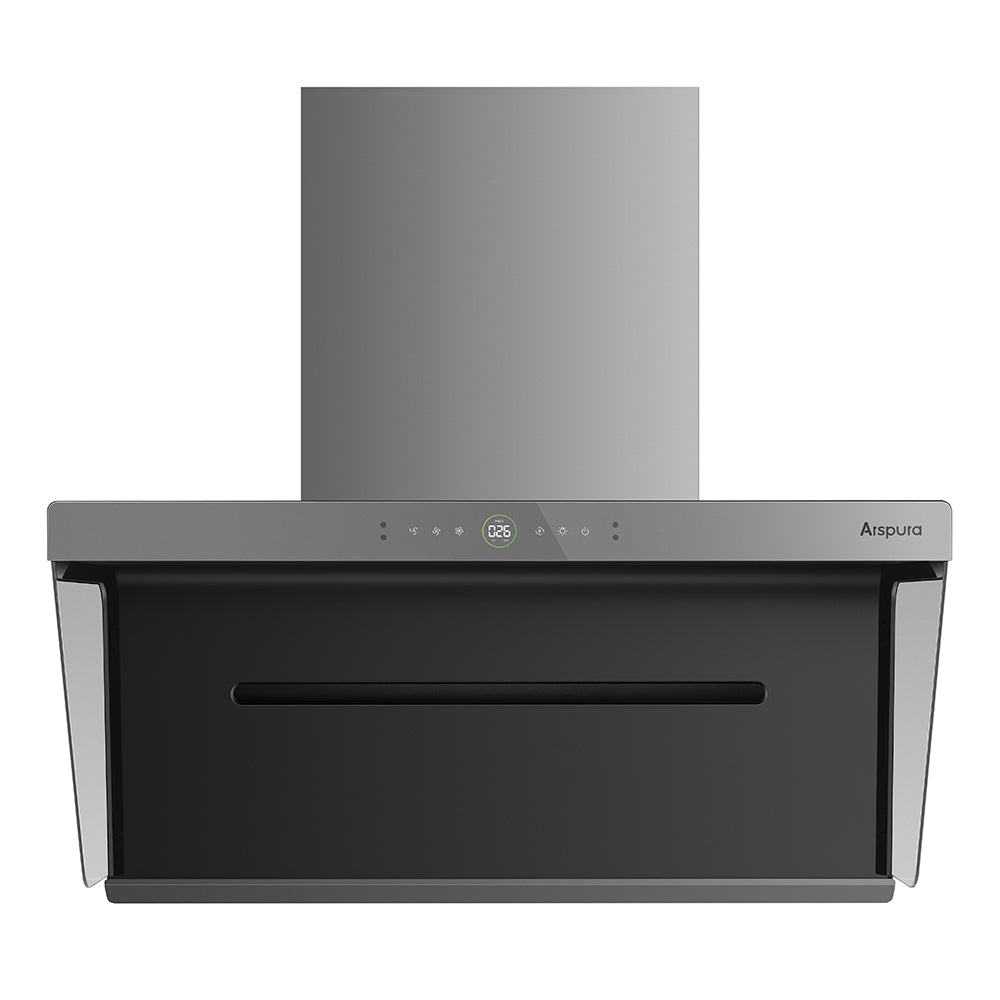
Every home cook knows the frustration of a smoky, grease-laden kitchen after preparing a meal. The lingering odors that cling to curtains, the sticky film coating cabinets, and the haze that fills the air are all signs of inadequate kitchen ventilation. At the heart of effective ventilation lies one critical factor: suction power. This often-overlooked specification determines whether your range hood merely circulates air or actually removes cooking byproducts from your kitchen.
Understanding suction power isn’t just about technical specifications—it directly impacts your indoor air quality, the cleanliness of your kitchen surfaces, and even your long-term health. Whether you’re stir-frying at high heat, searing steaks, or simply boiling pasta, the right suction power ensures that steam, smoke, and airborne grease particles are captured and expelled before they can settle throughout your home. This article explores why suction power matters, what factors influence its effectiveness, and how to choose a range hood that truly meets your kitchen’s ventilation needs.
Understanding Suction Power in Range Hoods
What is Suction Power?
Suction power represents the volume of air a range hood can move within a specific timeframe, typically measured in cubic feet per minute (CFM) or cubic meters per hour (m³/h). This measurement indicates how quickly and efficiently the hood can extract cooking fumes, steam, and airborne particles from your kitchen. A higher CFM rating means the hood can process more air, theoretically providing better ventilation.
However, suction power isn’t solely about raw numbers—it’s the result of motor strength, fan design, and the hood’s ability to create negative pressure above your cooktop. This negative pressure zone acts like a vacuum, drawing rising heat and smoke into the hood’s capture area before directing it through filters and out of your kitchen. The effectiveness of this process depends on the motor’s capability to maintain consistent airflow even when filters accumulate grease or when ductwork creates resistance.

How Does Suction Power Affect Kitchen Ventilation?
The relationship between suction power and ventilation quality becomes immediately apparent during cooking. When you sear meat or stir-fry vegetables at high temperatures, massive amounts of smoke, grease particles, and water vapor rise rapidly from the cooking surface. Adequate suction power captures these byproducts within seconds, preventing them from dispersing throughout your kitchen and into adjacent rooms. Insufficient suction allows smoke to escape the hood’s capture zone, where it rises to the ceiling, spreads laterally, and eventually settles on surfaces as a sticky residue.
Beyond visible smoke, suction power determines how effectively your hood removes microscopic particles and odors. Cooking releases ultrafine particles—some smaller than 2.5 microns—that can remain airborne for hours without proper ventilation. These particles contribute to indoor air pollution and can aggravate respiratory conditions.
Strong suction power creates a continuous air current that sweeps these particles into the filtration system before they can circulate. The same principle applies to cooking odors, which are carried by volatile organic compounds. A hood with robust suction establishes a direct pathway from cooktop to exhaust, minimizing the time these compounds spend in your living space and reducing the intensity of lingering smells that permeate fabrics and porous surfaces.
Factors Affecting Suction Power
Design and Size of the Range Hood
The physical dimensions and engineering of your range hood fundamentally determine its suction capabilities. A hood must extend at least as wide as your cooktop to effectively capture rising fumes—undersized hoods allow smoke to escape around the edges regardless of motor strength. The internal chamber depth and shape also matter significantly. Hoods with deeper capture zones create better containment, giving the suction system more opportunity to pull in cooking byproducts before they disperse.
The blower configuration—whether centrifugal or axial, internal or external—affects how efficiently the motor converts electrical power into actual airflow. Centrifugal blowers typically generate stronger suction at higher static pressures, making them more effective for ducted installations with longer vent runs. The quality of internal seals and the smoothness of airflow pathways reduce turbulence that wastes motor power, ensuring maximum suction reaches the cooking surface where it’s needed most.
Kitchen Layout and Airflow Patterns
Your kitchen’s architecture creates invisible forces that either support or undermine your hood’s suction power. Ductwork configuration plays the most significant role—every bend, length of pipe, and diameter reduction creates resistance that the motor must overcome. A straight, short duct run with smooth interior walls allows the hood to achieve its rated CFM, while a complex path with multiple turns can reduce effective suction by thirty percent or more. Ceiling height affects how far fumes must travel before reaching the hood’s capture zone, with higher ceilings requiring stronger suction to prevent smoke from dispersing laterally.
Cross-breezes from windows, doorways, and HVAC vents disrupt the hood’s ability to maintain its capture zone. A strong draft from an open window can push cooking fumes away from the hood entirely, rendering even powerful suction ineffective. Similarly, makeup air—the replacement air that enters your home as the hood exhausts—must come from somewhere.
In tightly sealed modern homes, inadequate makeup air creates negative pressure throughout the house, which can actually reduce the hood’s suction capacity and cause backdrafting in other appliances. Strategic placement of passive air inlets or dedicated makeup air systems ensures your hood can achieve its full suction potential without fighting against the building envelope.
Choosing the Right Range Hood for Your Needs
Analyzing Cooking Habits
Your cooking style directly dictates the suction power you need. If you frequently use high-heat techniques like wok cooking, searing, or grilling indoors, you generate significantly more smoke and grease than someone who primarily simmers or bakes. Heavy oil usage in frying or stir-frying produces airborne particles that require aggressive extraction. Consider how often you cook—daily meal preparation demands more robust ventilation than occasional weekend cooking.
The types of cuisine you prepare matter too; Asian cooking with high-heat wok work produces more fumes than European-style braising. Gas cooktops generate combustion byproducts that electric ranges don’t, necessitating stronger suction even for the same cooking tasks. Honestly assess whether you’re a casual cook making simple meals or an enthusiastic home chef pushing your cooktop to its limits, as this determines whether you need minimum adequate ventilation or maximum extraction capacity.
Evaluating Ventilation Needs
Calculating your required CFM starts with your cooktop’s BTU output for gas ranges or wattage for electric. A common formula suggests 100 CFM per 10,000 BTUs for gas cooking, though high-output burners exceeding 60,000 BTUs may need 1,200 CFM or more. Electric cooktops typically require 150-300 CFM for standard residential use. However, these formulas provide only baseline figures—your actual needs depend on additional factors.
Duct length and configuration demand CFM adjustments. For every foot of ductwork beyond ten feet, add roughly ten percent to your baseline requirement. Each ninety-degree elbow effectively adds several feet of resistance. If your installation requires extensive ducting through walls or roof spaces with multiple turns, you might need a hood rated fifty percent higher than the basic calculation suggests.
Kitchen size influences ventilation requirements too—larger spaces dilute cooking fumes, potentially reducing urgency, while compact kitchens concentrate pollutants and demand more aggressive extraction. Ceiling height above eight feet may require additional CFM to overcome the increased distance fumes must travel. Consider whether your kitchen opens directly to living areas, which increases the importance of capturing fumes before they spread, or whether it’s enclosed, which might allow slightly lower suction if you can close doors during intense cooking.
When comparing options from manufacturers like Arspura and others in the home supplies market, balance these technical requirements against noise tolerance, as higher CFM ratings typically produce more operational sound, potentially requiring quieter motor designs or external blower installations for powerful yet peaceful ventilation.
Also Read: Quick and Reliable Oven Repair Solutions for Your Kitchen
Making the Right Ventilation Choice
Suction power stands as the defining characteristic that separates truly effective range hoods from decorative appliances that merely occupy space above your cooktop. Understanding how CFM ratings translate to real-world performance empowers you to make informed decisions rather than relying on guesswork or marketing claims.
The interplay between motor strength, hood design, ductwork configuration, and your specific cooking habits creates a complex equation, but the investment in proper ventilation pays dividends in cleaner air, reduced maintenance, and a more pleasant cooking environment. A hood with inadequate suction becomes a constant source of frustration, while one properly matched to your needs operates almost invisibly, quietly removing cooking byproducts before you notice them.
As you evaluate options, prioritize actual suction capacity over aesthetics or brand recognition—the most beautiful hood fails in its primary function if it can’t effectively ventilate your kitchen. By carefully assessing your cooking patterns, kitchen layout, and ventilation requirements, you can select a range hood with suction power that transforms your kitchen from a source of indoor air pollution into a well-ventilated space where cooking remains a pleasure rather than a compromise.








